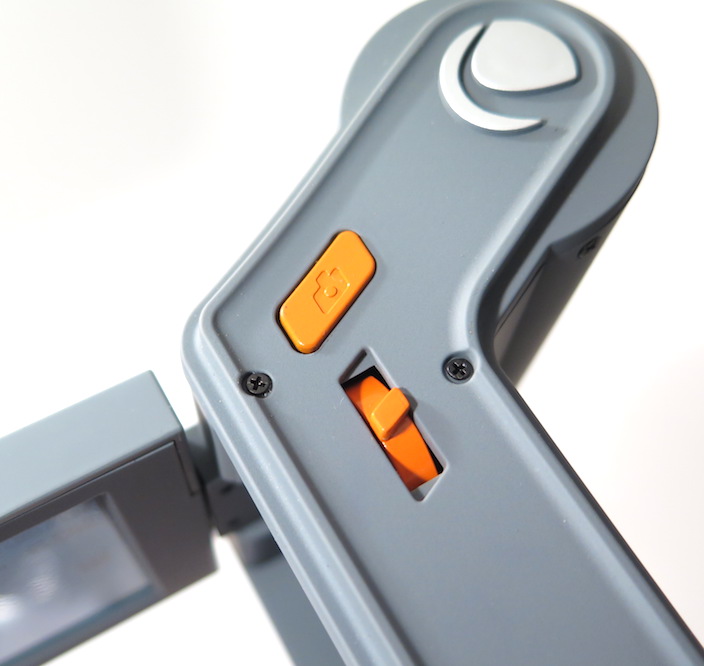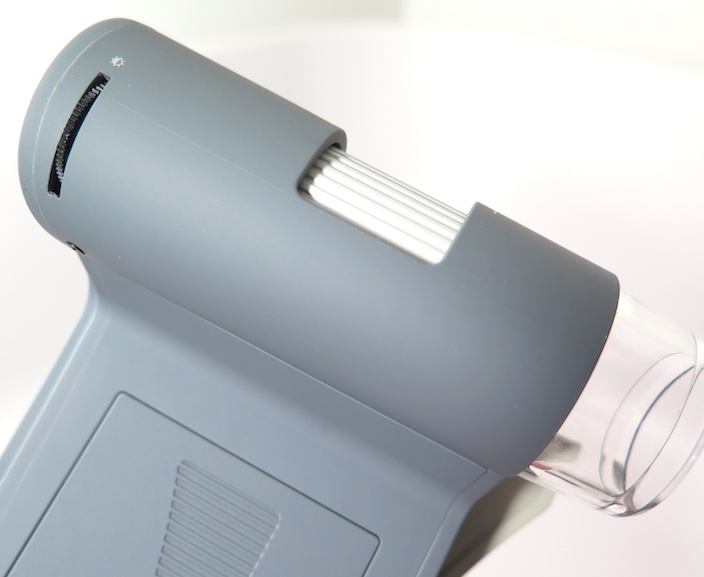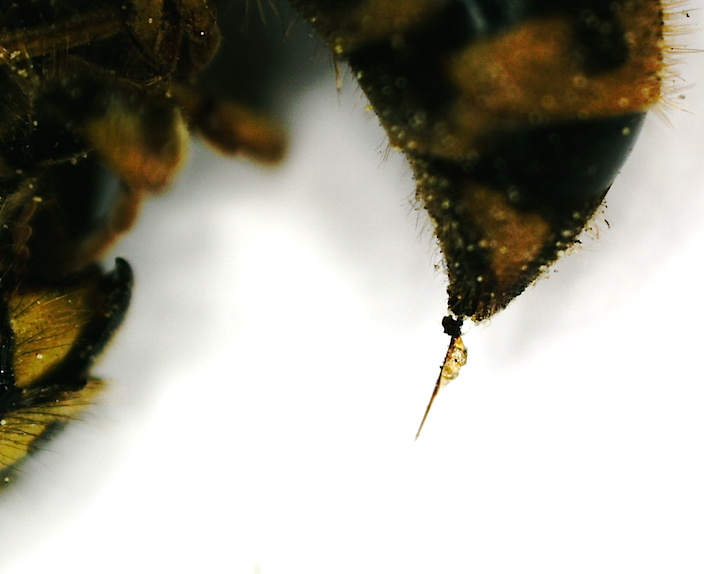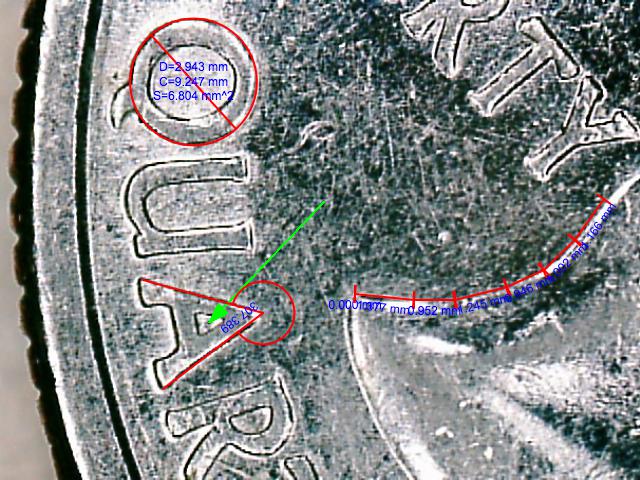Get Lost in the Magic of Learning with the Celestron Flipview Digital Microscope
By Martin Horejsi
Posted on 2015-06-26
One of the wonderful things about the amazing science education technology available to teachers today is that the tech can disappear—in a good way. The Celestron Flipview digital microscope is one of them.
Celestron, as a company can trace its roots back to 1955, but the magic of of optics goes back to the 15th century. Both the telescope and the microscope came into their own in the 1600s but not for lack of need. Curiosity has been driving science for thousands of years, and still drives students of all ages today.
Celestron makes nine optical microscope in addition to a robust line of telescopes. Celestron also offers twice as many digital microscope options. Of the 18 different designs, the Celestron Flipview stands out as an excellent tool which which to explore the small whether animal, vegetable or mineral.
And what makes the Celestron Flipview is that it does so much so fast that students can get immersed in the learning with the technology melting into the background. In order to blend into the learning ecosystem the device must be natural to hold, intuitive to operate, and provide instant and high quality feedback.
In the case of the Celestron Flipview, the shape of the scope, the position of the buttons, and the scrolling and focus adjustments make the Flipview more effective at viewing and capturing closeup and microscopic images than traditional means. The digital zoom works from 10x-120x meaning that the Flipview can inspect the small way beyond what is possible with traditional cameras on macro settings, magnifying glasses, and stereo microscopes.
The layout of the Celestron Flipview is a lightly “J” shaped frame with can be operated one-handed, but works well with two. A roller pillar controls the focus and small dial varies the amount of light coming from an octet of LEDs surrounding the lens. At five megapixels, the resolution and thus image quality provides pictures that are both sharp enough and huge enough for serious work.
The top of the Celestron Flipview contains a zooming toggle switch and a shutter button. While the zooming is digital not optical, there is a loss of image quality as the ones and zeros are amplified. But with over five million pixels, the image will hold together well enough for most digital uses. The five element IR Cut glass lens provides sharp images that are well within expectation given the amazing cellphone cameras students carry in their pockets. It’s not an understatement to expect early-mid 21st century students to expect perfection. Well, maybe not perfection, but at least a resolution better than the human eye.
In addition to still images, the Celestron Flipview scores well in the video arena. When the video option is selected, the camera records moving images with the same dexterity as still ones. Filming a honey bee on a dandelion (an Apis mellifera on a Taraxacum officinale) was easy with the Flipview as you can see in this YouTube snippet. At 30 frames a second, the Flipview video capture provides crisp images that are highly effective for study and documentation.
[youtube]https://youtu.be/5mcTqR2cXzE[/youtube]
The mobile aspects of the Celestron Flipview are increased by using an inexpensive replaceable lithium-ion (cell phone) battery and a micro-SD slot that will archive more pictures and video than can be taken by a student during any normal project. And since both 3.7 volt battery and card are replaceable, there is no measurable upper limit to operating the Celestron Flipview in the field. Micro-SD cards and the BL-5C (Nokia cell phone) battery are both inexpensive and for easily accessible. Charging the battery is in-camera is done the included AC adapter. USB charging would be a welcome addition to allow fulling the battery with a external or backup cell phone/tablet battery. Heck, even a solar panel for that matter.
Using the Celestron Flipview is easy whether holding it in hand and focusing by raising or lowering it in relation to the subject, using the flip-out kickstand to set if flush with the workpiece, or mounting it to any standard tripod screw or using the included tripod stand.
Handheld mode is very effective with moving subjects like insects. The Celestron Flipview can quickly be moved to keep the bug in focus and in view. I found that by focusing out a ways from close-up, it was much easier to follow the subjects, and then use a computer to crop in tighter on the subject images.
Digital and optical microscopes are are different birds, but both necessary in educating today’s students. The traditional optical machines are essential for gaining an intimate knowledge of the tiny universe just beyond the resolution of our rods and cones. Digital microscopes, on the other hand and such as the Celestron Flipview are excellent at interacting with the subject thorough the ability to meet the subject on its terms rather than forcing the subject into a laboratory environment. With a hand-sized form factor along with battery power and a large-feeling three-inch LCD screen, the Flipview opens worlds inside and especially outside the classroom.
[youtube]https://youtu.be/5T1leJCEt08[/youtube]
Output from the Celestron Flipview is trifold. The video display show a image plenty bright and sharp for work from real-time imagery alone on its 270 degree rotating TFT LCD (thin film transistor liquid crystal display) screen.. Or, as noted before, the pictures and video can be captured on a micro-SD card. Finally, the Celestron Flipview can output the image signal to an external source through the included AV cable allowing connectivity to comparable monitors, TV screens and projectors.
Using the Celestron Flipview outdoors is a pleasure, even in trying environments such as a large hill of angry red ants. The Flipview was overrun by Pogonomyrmex barbatus, but as long as the image capture button was free of pincer obstruction, when ants wandered into the field of view, taking pictures was easy. Using the Flipview both stand-alone and with the included tripod mount, a little practice and pre-focus allowed the capture of even the fastest moving ants. What this also means is that the Celestron Flipview makes an excellent teaching camera for use in classroom settings. When tripod-mounted, the Flipview
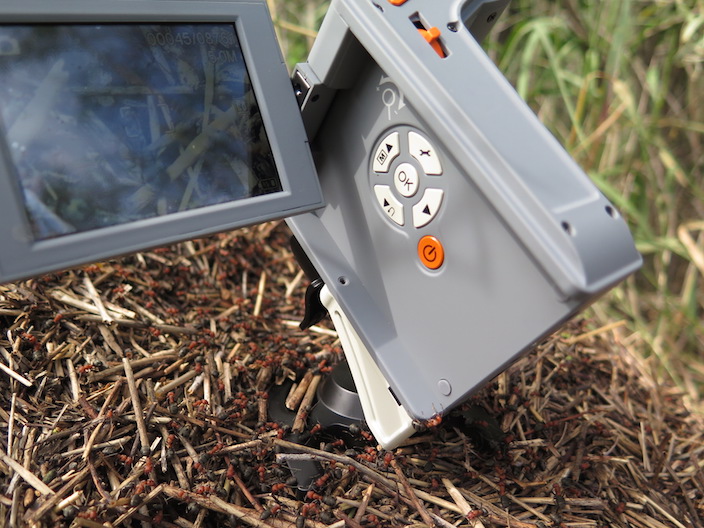
Camera-specific software called Celestron Micro Capture Pro software for both Mac and PC is included and allows both image editing and camera shutter operation through the mouse or trackpad. If a CD drive is not present, your you prefer an internet download, the platform-specific application can be downloaded from the Celestron support site. Once an image is captured, it can be inspected further with the software allowing measurement of circles, angles, distance, and scale along with the ability to annotate the image.
For 21st century learners, their expectations are high. It’s nice that the science technology available to them meets their expectations, and in the case of the Celestron Flipview, exceeds it.
Disclaimer: The views expressed in this blog post are those of the author(s) and do not necessarily reflect the official position of the National Science Teaching Association (NSTA).







